Respect is a feeling we all seek, especially in a work environment where we spend most of our waking hours. To earn respect, we need to give it. Organizations can create a culture of mutual respect through transparency and effective communication.
By Suzanne F. Stevens, Conscious Leadership and Social Contribution Cultivator, Founder, YouMeWe Social Impact Group Inc., Part of the Nobody Wants to Work Series.
In today’s world, diverse workplaces are becoming the norm. People from different backgrounds, races, genders, sexual orientations, abilities, and cultures work together. The challenge is to create a culture that respects and includes everyone.
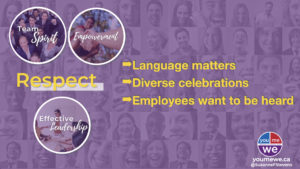 This is why respect is integral to creating Team Spirit, Empowerment, and Effective leadership in the Colleagues’ Hierarchy of Needs.
This is why respect is integral to creating Team Spirit, Empowerment, and Effective leadership in the Colleagues’ Hierarchy of Needs.
Each of us has multiple identities, and each one needs to be considered when creating an inclusive culture.
So, what can you, as a conscious leader, do now to demonstrate a culture of respect?
The Power of Inclusive Language: Making Everyone Feel Valued
Language matters. The language we use in our communication reflects our respect for others. Pronouns are important. As a matter of fact, Disney has set an example by changing their greetings and announcements to be more inclusive. Instead of saying: “Welcome ladies and gentlemen, boys and girls,” to “Good Evening, Dreamers of all ages.”
I don’t know about you, but I want to be addressed as a dreamer.
Similarly, Jeff Probst, the host of Survivor, asked a group of survivors in the 2022 session, “Would you prefer I change my trademark expression “Come on in, Guys?” Although all said they were okay with it, in short order, one Survivor suggested it was unnecessary. And he is right. It is not necessary. I have been encouraging people to stop using “guys” to address mix genders for years. Let’s just say many are very resistant to such a suggestion.
However, “folks,” “everyone,” “all,” “gang,” “team,”… or simply, in Jeff Prost’s case, “Survivors.” Hopefully, your team doesn’t think ‘survivors” is the correct noun for them. 🙂
Alternatively, we can drop the noun altogether.
By using inclusive language, we make everyone feel valued and respected.
Respecting Diversity and creating Inclusion in Action
I had the honor to host five DEI&B panels, and it was clear that there is resentment that all cultures and religious practices are not recognized in organizations. But it doesn’t need to be this way. There are several ways to respect colleagues’ differences. And the best part is that it will engage the team in unique ways while they learn about colleagues creating more opportunities for connection and collaboration.
Here are nine ideas to consider:
- Organize events to celebrate different cultures and religions in the workplace, such as Diwali, Eid, Chinese New Year, Hanukkah, and Christmas.
- Hosting lunches where employees can learn about diverse cultures can also be a great.
- Create a committee of employees from different backgrounds to promote and celebrate diversity and inclusion in the workplace.
- Give employees time off for religious holidays, such as Good Friday, Easter, Passover, and Yom Kippur.
- Allow (and encourage) employees to decorate their workspaces with cultural or religious symbols or artifacts.
- Provide multicultural training to employees to increase their awareness and understanding of different cultures and religions.
- Offer diverse food options catering to employees’ dietary and cultural preferences.
- Use internal communication channels to share information about different cultures and religions celebrated.
- Provide language classes to employees interested in learning a new language, such as Mandarin, Spanish, or Arabic.
Hosting events during working hours is encouraged so employees don’t feel obligated to take time away from family or make arrangements for children or ailing parents. If gathering for an evening event, making it optional is recommended.
From Hierarchy to Holacracy: Rethinking Organizational Structure to demonstrate respect.
People want to be heard. Employees want to have a voice in the organization’s direction and know if their ideas are used. Most importantly, they want to know the impact of those ideas. They don’t want to follow the leader; they want to lead beside you.
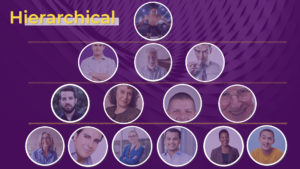 A hierarchical structure where decision-making power is concentrated at the top no longer works. Leaders need to give their colleagues a say in project design and execution, creating a culture of collaboration and an equal voice. Many organizations started implementing horizontal leadership, which, as it turns out, also had limitations. Cliques formed, and leaders emerged. So flat structures found themselves in quicksand, being pulled down by the loudest in the room.
A hierarchical structure where decision-making power is concentrated at the top no longer works. Leaders need to give their colleagues a say in project design and execution, creating a culture of collaboration and an equal voice. Many organizations started implementing horizontal leadership, which, as it turns out, also had limitations. Cliques formed, and leaders emerged. So flat structures found themselves in quicksand, being pulled down by the loudest in the room. 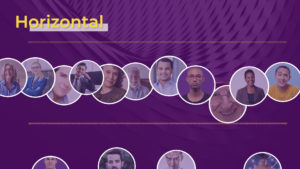
Enter in Holacracy structure.
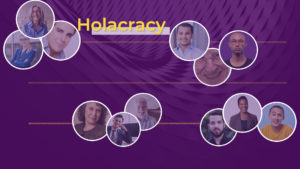
This structure, which distributes authority and decision-making to teams, can create a culture where people feel empowered and valued. People don’t have titles but roles. They work in a multitude of circles to provide their experiences and collaborate. The power is on the collective. There is more autonomy which fosters more creative problem-solving.
In Summary: Respect is the foundation of a healthy work environment. Inclusive language, diverse celebrations, and a culture of collaboration and equal say can create a workplace where everyone feels valued and respected. By creating a culture of mutual respect, organizations can retain talent, improve productivity and create a better working environment for everyone.
What can you do now to make your contribution count?
Start simple, and build.
Start with communicating with respect. Modeling is the fast way to entrench expectations in a culture.
An action to engage the team is ordering lunches from different cultures. You may have customers even if you don’t have employees within that culture. Although we are focusing on creating a culture to meet the needs of employees, gaining respect for diverse customers is a strategy that will pay dividends.
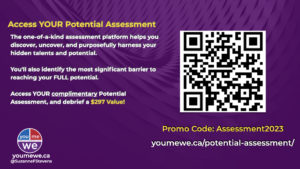 Let’s do this! I’m Suzanne F. Stevens, and at YouMeWe Social Impact Group, we grow Conscious leaders, their influence, and social impact—sustainably.
Let’s do this! I’m Suzanne F. Stevens, and at YouMeWe Social Impact Group, we grow Conscious leaders, their influence, and social impact—sustainably.
As part of our commitment to this mission, I invite you to complete a Potential Assessment– a transformation tool highlighting your strengths and growth opportunities. youmewe.ca/potential-assessment/
The best part, it reveals the biggest barrier to reaching your FULL POTENTIAL—a $297 value with YouMeWe compliments. Visit youmewe.ca/potential-assessment/ to gain access to this accurate transformation tool.
The article was originally posted by %author_name% Originally posted on%post_title%
. This article originally posted on Source